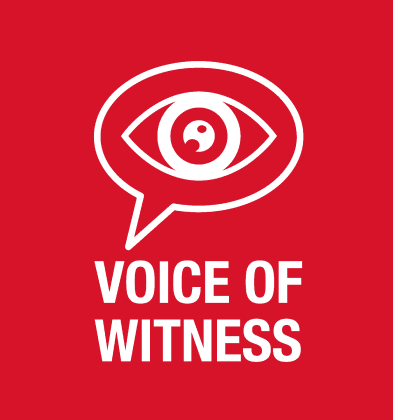
We at Voice of Witness know well that the process of story sharing can be transformational and life-changing for both audience and storyteller. But behind the simple act of asking others to share their stories, there are nuanced and always-changing uncertainties related to story ownership, trust, retraumatization, and sometimes the very safety of individuals sharing their stories.
Part of the transformative power of oral history stems from the intimacy and vulnerability that comes with listening to and sharing personal stories. And with that power comes the responsibility to be mindful about the planning and execution of oral history projects.
It’s important to consider questions such as:
How do power and privilege affect the project?
How do I interview people who belong to a different community than the one I’m from?
What kinds of research do I need to do ahead of the interviews?
How can power dynamics affect a narrator’s comfort?
How do I deal with secondary trauma when listening to difficult stories?
Addressing these challenges starts with building a trusting relationship with your narrator, and creating a safe space in which they feel comfortable sharing their story. Here are some tips to help you get started:
1. Take steps to make sure your narrator feels comfortable.
Let the narrator choose where and when they want the interview to take place. Periodically remind the narrator that they can pass on any questions at any time.
2. Listen without judgment.
Respect that narrators may sometimes express opinions that are opposed to your beliefs. If someone feels you reacting to something they’ve said, even nonverbally, they’re going to be less likely to open up.
3. Let the narrator know you’re empathizing with them.
Use verbal and nonverbal acknowledgments that are culturally appropriate, e.g., nodding, making eye contact. Being warm and present makes a big difference.
4. Take timeouts.
If a traumatic or challenging story comes up, or if you or the narrator feels overwhelmed in any way, suggest a brief timeout. Then return to the interview and ask if the narrator would like to continue with that issue or to table it for the next session.
5. Remember, an interview is not a dialogue.
You may identify with something a narrator has said and be tempted to interrupt. It’s important to remember that your role as an interviewer is to help your narrator maintain the flow of their storytelling.
6. Practice self-care.
Listening to and working with the stories of others is a transformative experience, but it can be difficult, especially when interviewing someone who has faced hardship or trauma. Secondary stress and “compassion fatigue” are common consequences. Create boundaries, talk to other people who can relate to what you’re dealing with, get enough rest and exercise, and accept your limitations.




